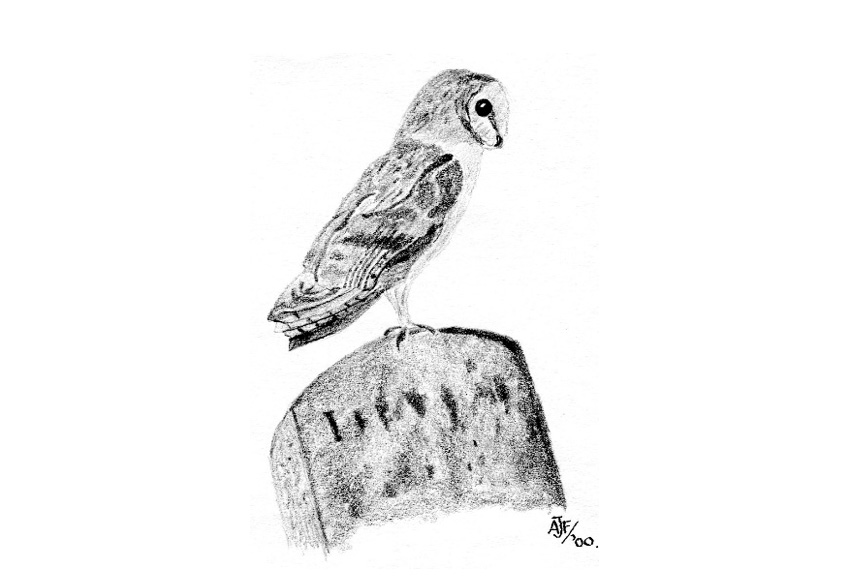Very rare visitor, former breeding resident.

In the eighteenth century the Barn Owl was considered to be the commonest owl in Britain. In 1877 it was classed as common in all districts of Hertfordshire. A slow decrease in their numbers was noted in the nineteenth century, which was linked to the loss of nest sites, food, more organised farming methods and the inevitable persecution by gamekeepers. This decline accelerated in the twentieth century due to further losses of nest sites, the reduction of rodents in both urban areas and at farms, severe winters, the effects of organochlorine fertilisers in the 1950s and the more recent hazards of road traffic accidents. Barn Owls nationally are now an endangered species.
Locally, Foster (1914) described Barn Owls as, “common everywhere”, but in Hine (1934) he stated that they had, “diminished in numbers of late years”. R. Burleigh writing in 1948 of the Stevenage area said that they were by then rare residents. Barn Owls nested in the ruins of St Etheldreda’s Church at Chesfield after the First World War, and were seen quartering the long grass near Fairlands Valley Way prior to the development of the Pin Green area in the early 1960’s, and also used to breed at Fairlands Farm.
Breeding was considered possible from the tetrad covering Norton Green in the 1973 Breeding Atlas. The 1992 Atlas considered breeding possible from the tetrads covering Boxbury Farm and, Pin Green. The 2012 Atlas did not consider breeding at Stevenage.
The 2012 Winter Atlas confirmed their presence from five of the tetrads covering Stevenage.
In March 1977 a pair of captive birds were released at Astonbury Wood and, a further four birds were proposed to be released there in 1979. One of the released birds was seen by the Field Study Centre on 12 August 1979 having a running battle with a Jay (Garrulus glandarius).
Other records are: on found dead at Box Wood on 2 November 1969; a pair killed in separate road accidents at Bragbury End in 1969; a nest found in a hollow tree near Aston on 5 June 1970, containing four young and, the remains of, Skylark (Alauda arvensis), Meadow Pipit (Anthus pratensis) and four mice; the remains of one found in the Avenue in 1974; one near Stevenage on 25 and 28 June 1979; a pair seen near St. Nicholas on 7 May 1980; one in Watery Grove on 26 July 1981; one found dead at an unrecorded location on 11 February 1982; one at Bragbury End during February 1983; one in the middle of Stevenage on 7 and 20 October 1983; one at Bragbury End in 1984; one at Box Wood in February 1985; one at Gresley Way on 24 February 2008; one at Junction 8 of the A1m on 27 January 2010; one at Norton Green on 1 and 2 May 2010; one seen at Stoney Ford, Aston on 17 February 2011; One near Box Wood on 26 November 2011; one seen dead beside the A1m in 2012; one at Astonbury Lane on 5 March 2015; one at Aston on 6 August 2015; one at the River Beane, Aston End on 7 and 21 May 2020; one at Watery Grove on 31 March 2025; one found dead on the A1(m) near Norton Green on 11 April 2025.
A nestling ringed at an undisclosed nest site near Stevenage on 3 July 2000 was found dead at Nazeing in Essex on 2 February 2001. Two nestlings that were also ringed at an undisclosed nest site near Stevenage on 9 July 2001 found their way to Lincolnshire in their first year, one was found dead at East Heckington near Sleaford on 8 October 2001, and the other found dead at Spalding on 20 May 2002. Also in 2002 there is a record of a pair raising three young near Stevenage.
